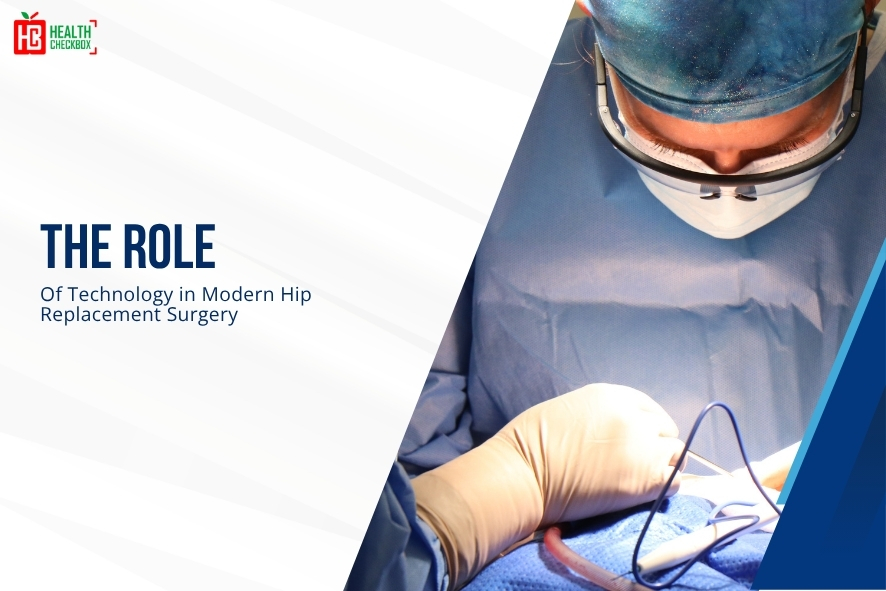With the advancement in medical surgery, patients have increasingly reaped the benefits like minimally invasive techniques and robotic surgery. This has led the patients to an improved outcome, decreased pain and a better quality of life. “The construction of plastic liners has improved significantly,” according to Dr. North. “Even after 2 decades, there is almost no detectable wear.” In this blog we will analyze the role technology in modern hip replacement surgery and its procedure.
Even those in their thirties, who need a hip replacement owing to injuries from a car accident, can get one successfully. Advanced medical surgeries like robotic surgery and 3D printing for custom implants are so efficient and precise that they enhance surgical capabilities and accuracies. These have minimum surgical outliers, and enable faster recovery times. Certainly, we its not possible to avoid the contribution of technology and its role in modern hip replacement surgery.
Advanced Materials in Hip Replacement Implants
The adoption of advanced materials such as very durable ceramics, wear-resistant polymers, and better metal alloys has increased the longevity and performance of hip implants. These materials provide greater strength, less wear, and a lower risk of inflammatory reactions associated with older implant materials.
Younger patients who are suffering from rheumatoid arthritis or sports-related injuries are now increasingly able to benefit from joint replacement surgery with the use of high-quality materials and surgical techniques. Some liner materials show minimal wear even after 20 years.
Innovations in Hip Replacement Surgery Using Modern Technology
Below are some latest innovations in medical science that have revolutionized hip surgery.
Navigation System Technology
A 3D model of the patients knee or hip joint is created by doctors using computers specialized software, and sensors prior to surgery. The surgeon can use this model to help plan the procedure and direct the new joints. Computer navigation aids the surgeon in precisely aligning the ligaments and bones with the new knee joint during knee replacement surgery. This increases surgical accuracy.
Because it can improve the joints’ overall stability and lower the chance of instability and other issues alignment is crucial. The hip socket may be positioned with the assistance of computer navigation during hip replacement surgery. The new joint’s ability to function depends on its proper positioning. Please be aware that not all patients or types of joint replacements can benefit from this technology.
Robotic Joint Replacement Technology
When performing hip and knee replacement surgery surgeons can increase precision and personalization by using robotic surgical arms. The surgeon can make sure that every part of their surgical plan is carried out exactly as planned with the assistance of the robotic arm. Arrays, which are tracking devices may be fitted into the patients knee for tracking the surgery effects. These devices provide information to the robotic arm regarding the location, orientation, and position of the hips or knees. The robotic arm has the ability to either stop the process until the surgical team repositions the patient appropriately or make real-time alignment adjustments if the position changes. Both the robotic arm and the operating surgeon hold certain medical tools or instruments while the procedure is performed.
These instruments are kept from straying from the surgeons plan by the arm. Gradually, the surgical team can modify the computer and make any small plan adjustments according to the procedure requirements. Following the implantation of the prosthetic implants the computer can produce three-dimensional (3D) images of the new joints postoperative alignment and implant placement. Before the procedure is finished the surgeons can evaluate the knees alignment and stability using these real-time 3D images and make any necessary corrections. Study up on the topic of robotic knee replacement.
Advanced Imaging
Performing MRI and X-ray imaging is indispensable before, during, and after hip and knee replacement surgery to avoid the complications and risks. 3D motion capture technology is one new method that is currently showing promise. Using an array of cameras this technology tracks a patients motion in real time to provide better views of the joint for surgical pre-planning and during the procedure. Following surgery HSS surgeons might employ a method known as fluoroscopy to evaluate the bio-mechanical performance of a patients knee implant and determine how well it replicates the knees natural movement.
One type of imaging called fluoroscopy makes use of a continuous high-resolution X-ray. It lets the doctor look at the bodys internal pictures in real time and assess the joints and how they move from almost any angle. Surgeons can use this technique to evaluate healing as well as identify other important aspects of a patients recovery such as how movement is being impacted by soft tissues and ligament structures.
Augmented Reality Technology
At the start of 2021 HSS performed the first knee replacement in the US with augmented reality assistance. Through the use of augmented reality (AR) smart glasses surgeons can look out the knee structures of the patients and track the progress of the surgeries in real time in order to improve the patient’s condition. By using this method, the surgeon can avoid turning their head to gaze at a computer screen. This technology may enhance implant placement.
3D Printing Technology
Any joint replacements ultimate objective is to create an implant that will last the patients entire lifetime. Some patients can have joint implants made specifically for them by HSS surgeons using 3D printing technology. With these customized implants the need for fixatives like bone cement may be reduced or eliminated. Additionally, the natural bones capacity to grow into the implant is improved by customized implants. Patients with more complicated conditions, such as those who have had other implants fail in the past should pay special attention to this. In 2021, the first hospital-based 3D design and printing facility was established by HSS and LimaCorporate. For some patients who need intricate joint reconstruction surgery this facility allows HSS to produce personalized orthopedic implants.
Pain-reducing Techniques
Instead of using general anesthesia for joint replacement surgery, HSS typically uses spinal anesthesia, also referred to as an epidural. This kind of anesthesia aids in pain management right after surgery because it wears off gradually. In the vicinity of the joint replacement, the patients might also be offered nerve blocks after the spinal anesthesia wears off. Pain can be relieved for 24 to 36 hours by injecting medications into the nerves above the knee. Together with drugs like antidepressants, anti-inflammatory drugs, and medications for nerve pain these technologies help patients recover more quickly and use fewer narcotics.
Benefits of Technology in Modern Hip Arthroplasty
Advancements in technology, research, and a deeper understanding of the human body–all of these play a crucial role in the quality of life for humans. With the use of robots in hip procedures, the surgeons gain enhanced precision that leads to more accurate placement of the implant. Albeit it may be a challenge, robotic-assisted hip replacement has multiple advantages over conventional hip arthroplasty. A 3D model and a robotic arm lets the surgeon gain enhanced precision and accuracy for a quick recovery of patients.
- Minimally Invasive: Generally, open surgery is the standard procedure for hip procedures. And this involves making a single big incision at the hip joint. By comparison, robotic technology can enable site visualization through the use of a 3D model. As a result, this innovative surgery requires only 2-3 small incisions at the hip joint. And this results in shorter hospital stays, less pain, and faster recovery.
- Personalized Care: Before the start of surgery, a CT scan is performed. It provides a 3D image of the operative site, and this helps your surgeon provide individualized treatment based on your specific anatomy. No experienced surgeon can achieve the accuracy and precision that the robotic arm will provide. In any case this enables for optimal restoration of the injured tissue, reducing the chance of complications during the treatment.
- Limited Surgical Range: The 3D-generated model and preprogrammed limits can prevent the robotic arm from injuring healthy tissue outside the surgery area. This means that adjacent tissues will suffer minimal injury, resulting in fewer difficulties after recuperation.
- High Success Rate: Success rates for hip replacement with robotic technology have skyrocketed, most likely due to the advantages outlined above.
Conclusion
Technological advancements in hip arthroplasty is a continuous process and has improved patient outcomes and surgical accuracy. Innovations that include 3D printing, computer-assisted navigation, and new biomaterials have enabled more precise implants. And these are tailored to increase the longevity and functionality of prostheses. Also, it makes revision surgeries less frequent and more successful.

